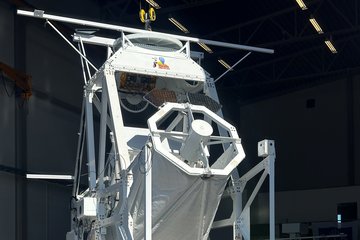All genres
41.
Poster
Moho depth across the Trans-European Suture Zone from ambient vibration autocorrelations. European Geosciences Union General Assembly, Vienna, Austria (2017)
42.
Poster
A new moonquake catalog from Apollo 17 geophone data. 48th Lunar and Planetary Science Conference, The Woodlands, Texas (2017)
43.
Poster
Crustal thickness in central Europe from single-station seismic noise autocorrelation analysis. European Geosciences Union General Assembly, Vienna, Austria (2016)
44.
Poster
Shallow structure of the InSight 2018 landing site in Elysium Planitia, Mars, from ambient vibration Rayleigh wave ellipticity: A modeling study. AGU Fall Meeting, San Francisco, USA (2016)
45.
Poster
Moho depth from single-station seismic noise autocorrelations in preparation of the InSight SEIS installation on Mars. 41. Sitzung der AG Seismologie, Wildbad-Kreuth, Germany (2015)
46.
Poster
Applying a Hidden Markov Model-based event detection and classification algorithm to Apollo lunar seismic data. AGU Fall Meeting, San Francisco, USA (2014)
47.
Poster
Crustal and lithospheric structure across the boundary of the East European Craton from receiver functions. AGU Fall Meeting, San Francisco, USA (2014)











